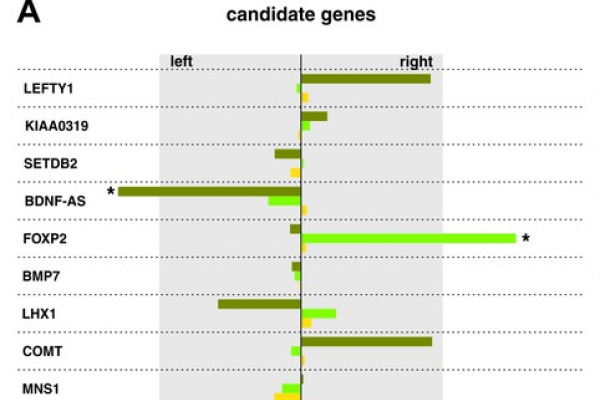2017-02-17

Almost everyone has a preferred hand that excels at most tasks, even though our hands are anatomically almost identical. So far, most researchers assumed that handedness is largely under direct control of variation in certain genes, but the scientific evidence for this assumption has been weak. Epigenetic mechanisms affect gene activity independently from the actual DNA sequence. During human embryonic development, preliminary forms of handedness arise before the motor cortex that controls our movements is connected to the spinal cord that is responsible for movement execution. A multidisciplinary team from Biopsychology and several other departments of the medical and psychological faculties could now show that along with the onset of asymmetric hand movements epigenetic factors (more specifically miRNA and DNA methylation) lead to massive gene expression asymmetries in the spinal cord segments that innervate arms and hands. These findings imply a fundamental shift in our understanding of the ontogenesis of hemispheric asymmetries in humans. For the first time, our study sheds light on the molecular epigenetics of asymmetry formation.

Almost everyone has a preferred hand that excels at most tasks, even though our hands are anatomically almost identical. So far, most researchers assumed that handedness is largely under direct control of variation in certain genes, but the scientific evidence for this assumption has been weak. Epigenetic mechanisms affect gene activity independently from the actual DNA sequence. During human embryonic development, preliminary forms of handedness arise before the motor cortex that controls our movements is connected to the spinal cord that is responsible for movement execution. A multidisciplinary team from Biopsychology and several other departments of the medical and psychological faculties could now show that along with the onset of asymmetric hand movements epigenetic factors (more specifically miRNA and DNA methylation) lead to massive gene expression asymmetries in the spinal cord segments that innervate arms and hands. These findings imply a fundamental shift in our understanding of the ontogenesis of hemispheric asymmetries in humans. For the first time, our study sheds light on the molecular epigenetics of asymmetry formation.